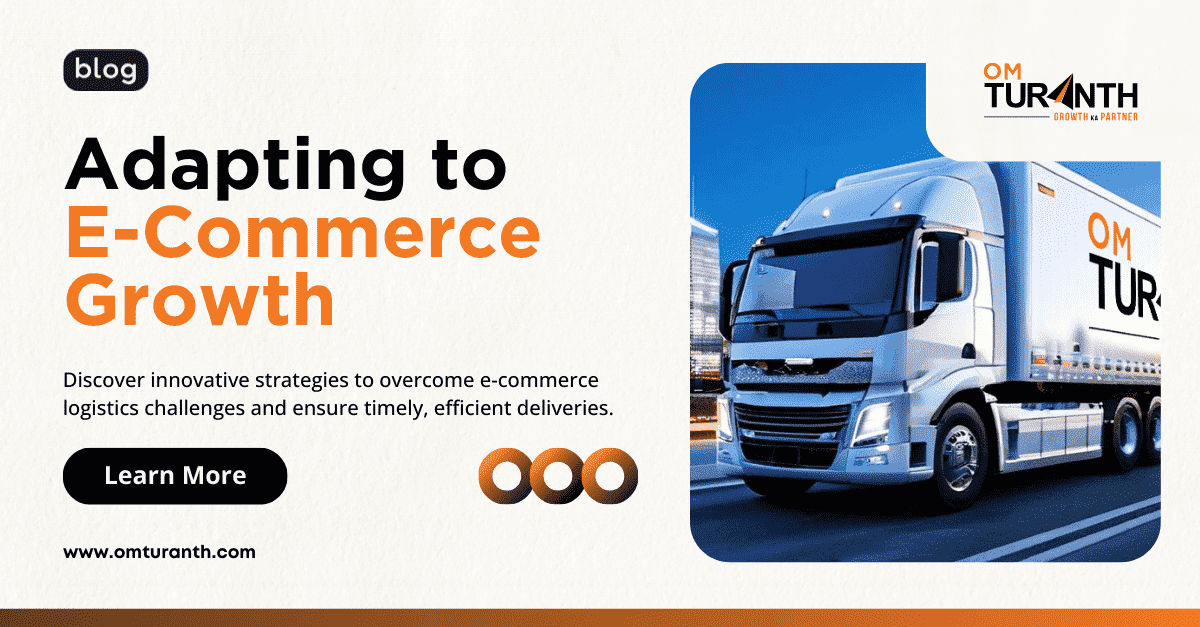Adapting to E-Commerce Growth: Challenges and Solutions for Logistics Providers

Introduction
The rise of e-commerce has revolutionized the logistics industry, presenting both significant opportunities and formidable challenges. As online shopping continues to grow exponentially, logistics providers must adapt to meet the increasing demands and expectations of consumers. This article explores the key challenges faced by logistics providers in the e-commerce era and offers innovative solutions to address these issues.
1. The Surge in Demand
Understanding the Boom With e-commerce booming, logistics providers are experiencing unprecedented demand. The sheer volume of packages to be delivered has skyrocketed, requiring companies to scale their operations rapidly.
Solution: Invest in Technology To manage this surge, logistics providers must invest in technology such as automated sorting systems and advanced warehouse management systems. These technologies streamline operations, improve efficiency, and ensure timely deliveries. For a deeper understanding of efficient logistics, check out the
importance of efficient logistics in manufacturing.
2. Last-Mile Delivery Challenges
The Last-Mile Puzzle Last-mile delivery is often the most complex and costly part of the logistics process. Urban congestion, diverse delivery locations, and the need for speed pose significant challenges.
Solution: Innovative Delivery Models Implementing innovative delivery models like locker systems, and crowd-sourced delivery networks can help overcome these challenges. These models offer flexibility and can significantly reduce delivery times. See how we ensure
reliable delivery for industrial equipment.
3. Meeting Consumer Expectations
High Expectations Today's consumers expect fast, reliable, and transparent delivery services. Meeting these high expectations is crucial for maintaining customer satisfaction and loyalty.
Solution: Enhance Customer Communication Effective communication is key. Providing real-time tracking, proactive updates, and multiple delivery options can enhance the customer experience. Additionally, leveraging customer feedback to continuously improve services is vital. Explore more on overcoming
top logistics challenges faced by manufacturing units.
4. Managing Returns
The Returns Dilemma E-commerce has also led to an increase in product returns, which can be costly and complex to manage.
Solution: Streamlined Returns Processes Implementing streamlined returns processes, such as easy-to-use return portals and efficient reverse logistics systems, can mitigate the impact of returns. Offering hassle-free returns also enhances customer trust and satisfaction. For insights on handling bulk shipments efficiently, check out our
case study on bulk shipments.
5. Scalability and Flexibility
Adapting to Fluctuations E-commerce demand can be highly variable, with peaks during holiday seasons and sales events. Logistics providers need to be scalable and flexible to handle these fluctuations.
Solution: Scalable Infrastructure Investing in scalable infrastructure, such as modular warehousing and temporary staffing solutions, can help manage peak periods. Utilizing data analytics to predict demand patterns and adjust resources accordingly is also beneficial. Learn more about scalable solutions and the
role of customer service in logistics.
6. Sustainability Concerns
Eco-Friendly Logistics Consumers are increasingly concerned about the environmental impact of their purchases, prompting logistics providers to adopt sustainable practices.
Solution: Green Logistics Initiatives Adopting green logistics initiatives, such as using electric vehicles, optimizing delivery routes to reduce emissions, and using eco-friendly packaging materials, can address these concerns. These practices not only benefit the environment but also enhance the company's reputation. Understand how digital transformation is part of embracing
new technologies in logistics.
Conclusion
As e-commerce continues to grow, logistics providers must adapt to meet new challenges. By investing in technology, implementing innovative delivery models, enhancing customer communication, streamlining returns processes, and adopting sustainable practices, logistics companies can thrive in the e-commerce era. Embracing these strategies will not only improve operational efficiency but also ensure customer satisfaction and loyalty.